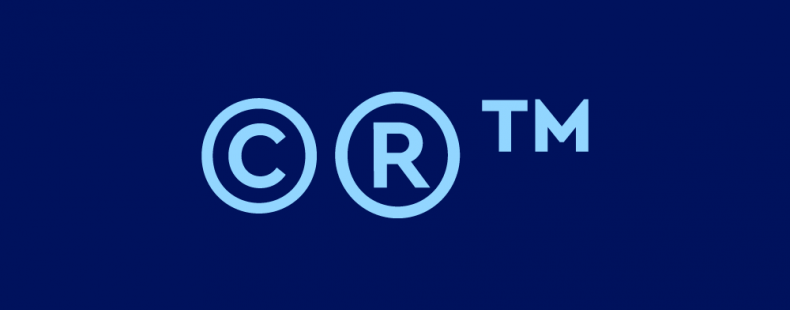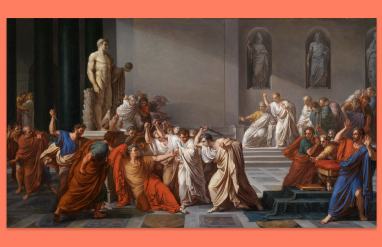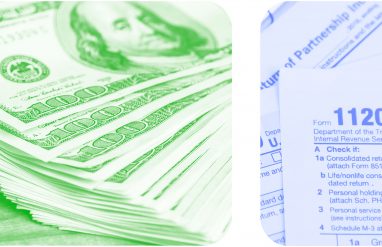If you’ve ever purchased a product, read a book, or watched a movie (read: everyone currently on this page), then you’ve likely seen four symbols time and time again: ™, ®, ©, and ℠. They can be large or close to microscopic. No matter how small, however, they are powerful and convey a lot of meaning.
So what’s the deal with each, and what makes them different from each other? Let’s decode the symbol soup.
What does the trademark symbol (™) mean?
A trademark is a name, symbol, or mark that distinguishes a product or brand from other products or brands. By extension, it can also be used to describe something that’s characteristic to a person or thing in a more metaphorical way, such as “the singer’s trademark rhythm.” The word trademark, first recorded in the mid-1500s, literally is the mark (as a name or logo) that is proprietary to a business (trade).
Trademarks are often claimed with the ™ superscript (a character that’s written above the line, as opposed to a subscript, which goes below the line). You can find that little floating symbol just about everywhere from the grocery store aisles, to TV shows, to ironic Instagram captions. From a business standpoint, it’s used to show that the person who made and is marketing a product or good considers it to be distinct from others. There’s just one catch: ™ doesn’t necessarily mean that the product or good is actually a unique registered product.
Using the trademark superscript could mean that the claimed product is in the process of registering for a government registered trademark (more on that in a bit). It could also mean that the person using it considers the unregistered product unique. Even things that are denied government protection as a registered trademark can continue to use the ™ symbol.
Some word processors like Google Docs automatically change TM into ™, while others, like Microsoft Word, require you to use Ctrl+Alt+T or type ™.
Access to the symbol isn’t restricted to word processors, though. Emoji have waded into ™ territory as well, and ™ is used colloquially (most often as an ironic joke) after saying a statement or posting a picture to make it stand out as original or important. But just because you see ™ used on every photo of your favorite meme account doesn’t mean that it’s legally trademarked.
What does the registered symbol ® mean?
If trademarks were basketball, the ® superscript symbol would be the NBA and ™ would be the pickup games at your local gym. The ® on a product means that it’s a registered trademark, meaning the brand name or logo is protected by (officially registered in) the US Patent and Trademark Office, while plain old ™ trademarks have no legal backing.
Protections for registered trademarks last for 10 years and can be renewed after that. If a person or business uses the registered name, logo, or symbol without prior approval from the person who owns the trademark, they can be taken to court for trademark infringement. For example: a street basketball group using the NBA’s trademarked red, white, and blue logo without running it by the league’s owners and lawyers could be sued.
The ® also has a lot more restrictions on who can use the symbol. It can only be used by people who have officially registered and been approved. A person or business that uses it without government registration could end up being taken to court for fraud, according to the International Trademark Association. This system was codified in US law in 1946. The law allowed people to show they had registered their trademark with the Patent and Trademark Office by writing “Registered in U.S. Patent and Trademark Office,” “Reg. U.S. Pat. & Tm. Off.,” or ®. The latter is obviously a lot more user friendly. Seeing the full-on “Registered in U.S. Patent and Trademark Office” next to your favorite brand is a whole lot more distracting than a little R with a circle around it, after all.
To type the symbol out, word processors typically only require you to type (R), and the program usually automatically switches it to ®.
What does the copyright symbol © mean?
Another capital letter in a circle protects the actual product, idea, or work just like how ® protects a logo, name, or slogan: the copyright symbol, or ©.
A copyright is the right to make copies of, license others to make copies of, or otherwise use an artistic or creative work. Copyrights protect how something is expressed rather than a specific good or fact. It’s exclusive, meaning only one entity can hold the copyright and use the copyrighted material. The range of things that can be copyrighted is long, and includes literary works, music, sound recordings, movies, photography, and art. As its name suggests, the word copyright is literally the right to copy; the word was first recorded in the early 1700s.
Unlike the 10-year limit a registered trademark carries, a copyright lasts for the lifetime of the creator plus 70 years after they die. Creators also aren’t required to file for official registration with the government. According to the US Copyright Office, eligible published and unpublished works are protected “the moment it is created and fixed in a tangible form.” You have to register with the copyright office if you want to take someone to court for copyright infringement, however.
The first federal copyright act was in 1790. It was a little more freewheeling back then, and people claiming a copyright weren’t required to add a copyright notice to their work. Newspapers took that duty on instead. Anyone claiming a copyright had to put it in a newspaper for four weeks within two months of claiming the copyright. By 1802, the law changed to require that copyright notice be put on every copy of a work. It changed again more than a century and a half later. As of March 1, 1989, creators aren’t required to display copyright notice for copyright protection.
Similar to the ® symbol, all you have to do is type (C) for most word processors to put in the © symbol. On Microsoft Word, typing Ctrl+Alt+C will do the trick.
What is a service mark (℠)?
A service mark is similar to a ™ trademark in that it’s an unregistered designation, but it refers to services (as the name suggests) rather than a product or good. Blue Cross and Blue Shield, American Express, and Planned Parenthood all use service marks as opposed to the ™ trademark used on something like an unregistered clothing brand.
Both trademark and service mark apply in many cases. American Express is a trademarked name with a trademarked logo, but the company also provides a service. For that reason, service marks are often lumped in with general trademark conversations.
Similar to anything that carries a ™, a service mark doesn’t necessarily mean it’s protected by trademark law. A service mark is sometimes shown by a ℠ superscript, though it’s not necessary and is far less common than the ™. Still, it’s often included in the legal disclosures of companies that provide services like banking or healthcare and is broadly included in trademark conversations.
It’s a little more difficult to insert a ℠ than it is a ®, ™, or © in a word processor. You’ll have to go to the insert symbol or insert special characters menu to find it. You’ll now know what it means the next time you see a little symbol next to your favorite brand or service. Despite all of the differences, there’s one universal truth: the symbol soup is there to protect people’s ideas and creations and let others know it shouldn’t be stolen.













